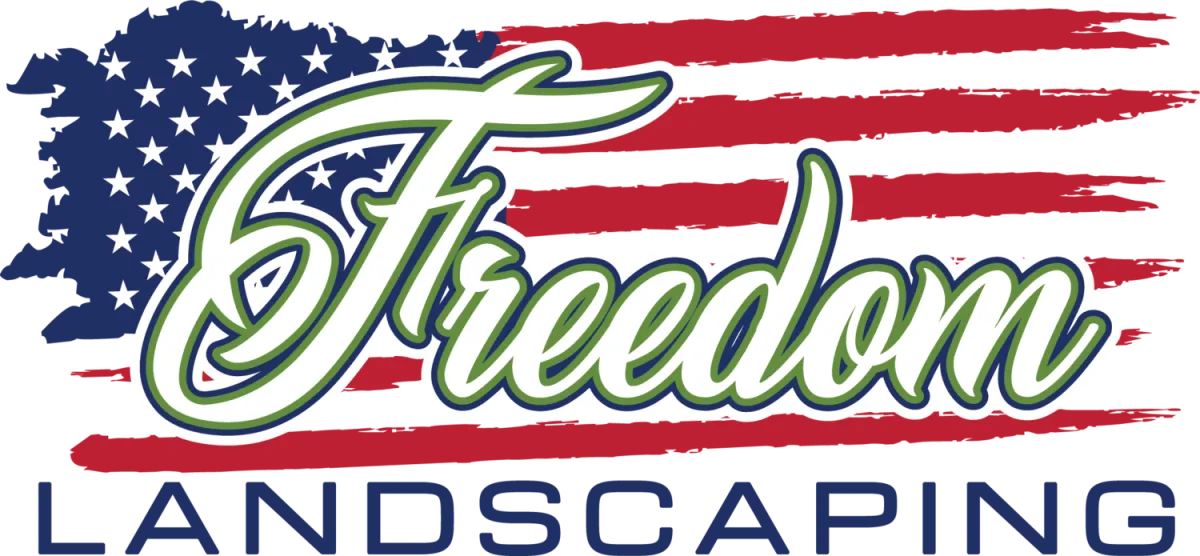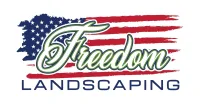BLOGS

What Is A Berm In Landscaping?
In landscaping, a berm is a raised mound of soil that enhances visual appeal, aids in drainage, and provides privacy while blocking noise and wind. Typically, berms are 4-6 times longer than wide and 18-24 inches high to prevent erosion. They add interest, improve drainage, and manage water flow, making them a versatile choice for landscapes.
At Freedom Landscaping, we expertly design and install custom berms to enhance your outdoor space. Based in Sicklerville, NJ, we tailor each berm to fit your needs, boosting both functionality and aesthetics. Contact us to transform your landscape today!
Key Takeaways
Berms are mounded soil features that serve both practical and decorative functions in landscaping.
They help manage water flow, improve drainage, and add visual interest to flat landscapes.
Berms can provide privacy, create distinct zones, and hide unsightly elements.
Proper construction and plant placement are key to a successful berm.
Freedom Landscaping offers expert berm installation and other landscaping services in Sicklerville, NJ.
Key Features and Uses of Landscaping Berms
Adding Visual Interest: Berms introduce height and variety to a flat landscape, making the space more dynamic and engaging.
Privacy and Noise Reduction: They can block unwanted views, act as sound barriers, and provide a sense of seclusion in an outdoor space.
Improved Drainage: Berms help divert water flow and prevent pooling, which is especially useful in areas prone to flooding or poor drainage.
Raised Planting Beds: Ideal for plants that require well-draining soil, berms offer a raised bed that improves plant health and growth.
Creating Distinct Zones: Berms can be used to separate different areas within a larger landscape, such as defining a play area, garden, or seating space.
Concealing Eyesores: They can hide unsightly elements like utility boxes, septic systems, or other less attractive features on a property.
Constructed by mounding soil into an asymmetrical shape with gradual slopes, berms can be edged with stones, bricks, or short retaining walls to stabilize the soil. For added appeal, taller plants are often placed at the back of the berm, with shorter plants on top and trailing varieties along the sides. Mulching the soil not only enhances the look but also helps prevent erosion and weed growth. When designed and installed thoughtfully, berms can significantly enhance the functionality and beauty of any landscape.
Landscaping Guide to Building and Planting Berms
How to Build a Berm in Your Yard
Building a berm involves strategic planning and the right materials. Start by selecting a location that needs better drainage, privacy, or a visual focal point. Outline the berm's shape, and then layer soil, starting with coarse materials for drainage. Sculpt the berm and plant appropriately.
Select Location: Choose an area needing drainage, privacy, or visual interest.
Outline Shape: Use a garden hose or spray paint; make it longer than wide to prevent erosion.
Layer Soil: Begin with coarse materials like sand or gravel, then topsoil.
Sculpt Berm: Create a gradual slope; shape as desired.
Planting: Use trees, shrubs, perennials, and ground covers suited for well-draining soil.
Add Mulch: Helps retain moisture, suppress weeds, and prevent erosion.
Benefits of Using Berms in Landscape Design
Berms are multifunctional landscape features that offer aesthetic and practical benefits. They improve drainage, provide privacy, and act as sound barriers. Additionally, they add visual interest and can serve as raised planting beds.
Improved Drainage: Elevates areas to divert water away from flooding spots.
Privacy: Acts as a natural barrier to block views and noise.
Aesthetic Appeal: Adds layers and breaks up flat yards.
Raised Planting Beds: Ideal for showcasing plants.
Focal Points: Creates visual interest and separates garden areas.
Landscaping Ideas for Small Yards
In small yards, berms can add depth and dimension, making the space appear larger and more dynamic. Place a berm strategically to create focal points and enhance the visual appeal while managing water flow.
Placement: Position in corners or along fences to create focal points.
Plant Selection: Use evergreens, flowering shrubs, and perennials for year-round interest.
Decorative Elements: Add small rocks, birdbaths, or statues.
Water Management: Prevent puddles and waterlogging with proper design.
Best Plants for Berms
Choosing the right plants is crucial for the success of a berm. Opt for drought-tolerant species that thrive in well-draining soil. Incorporate a mix of textures, colors, and heights to create a vibrant and attractive berm.
Ornamental Grasses: Fountain grass, blue fescue for texture and movement.
Shrubs: Boxwood, dwarf juniper for structure.
Perennials: Black-eyed Susan, lavender for color and fragrance.
Ground Covers: Creeping thyme, sedum for cascading effects.
Trees: Dogwoods, ornamental cherries for height and shade.
Common Mistakes to Avoid When Building a Berm
Avoiding common mistakes is essential for a successful berm. Steep slopes, poor-quality materials, and improper planting can undermine the berm's functionality and appearance.
Steep Slopes: Maintain a gradual slope (ideally a 5:1 ratio) to prevent erosion.
Poor Materials: Use coarse materials for the base and high-quality topsoil.
Improper Planting: Choose plants suited to the berm’s drainage conditions.
Lack of Mulch: Prevents weed growth and moisture loss.
Frequently Asked Questions About Landscaping
What is a berm around a house?
A berm around a house is a raised mound of soil used to improve drainage, provide privacy, or enhance landscaping aesthetics. It helps divert water away from the foundation and can also block unwanted views.
What are berms also known as?
Berms are also known as earth mounds or soil mounds. They are used in landscaping to create visual interest and manage water flow.
What is the difference between a berm and an embankment?
A berm is a small, often decorative mound used for landscaping, while an embankment is a larger, engineered structure designed to support roads or railways and prevent flooding.
What are the different types of berms?
Different types of berms include decorative berms for aesthetics, functional berms for drainage and erosion control, and privacy berms to block views and noise.
What is the best material for a berm?
The best materials for a berm include a base of coarse materials like sand or gravel for drainage, topped with high-quality topsoil. This combination ensures stability and proper plant growth.
Enhancing Your Landscape with Freedom Landscaping
Berms are a versatile and valuable addition to any landscape, offering both functional benefits and visual appeal. Whether you're looking to improve drainage, add privacy, or simply elevate your garden's aesthetics, berms can make a significant impact. At Freedom Landscaping, we specialize in creating beautiful, custom berms that suit the unique needs of your property. With our expert team and commitment to quality, we ensure that your landscape is not only functional but also a stunning reflection of your style.
Don't wait to create the yard of your dreams—contact us now at Freedom Landscaping for your free quote. Experience the difference with our innovative designs and commitment to quality. Nothing Beats Freedom—reach out to us today!
Ready To Give Your Property The Love It Deserves?
Whether it is keeping your lawn professionally maintained or completely re-vamping the look of your landscape, let our team of professional landscapers at Freedom Landscaping take your property to a whole new level!
Contact Us
Mon - Sat: 7:00 am - 6:00 pm
Sunday: Closed
© 2025 Freedom Landscaping LLC. All Rights Reserved. Privacy Policy. Terms & Conditions. Web Design By Fused Media.


